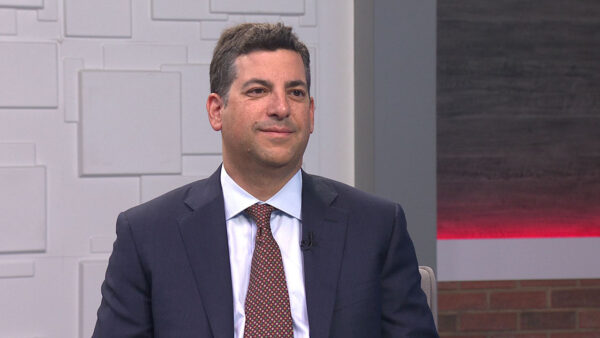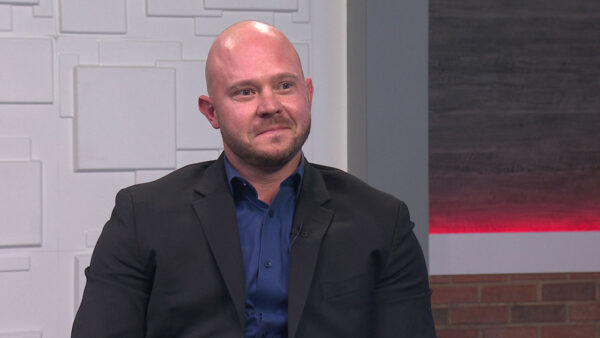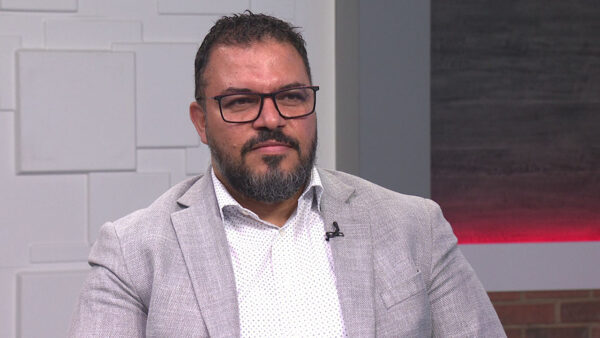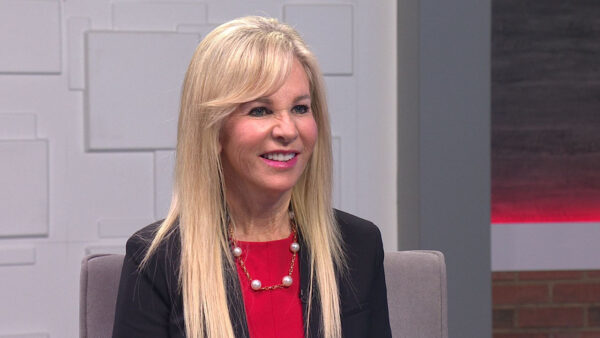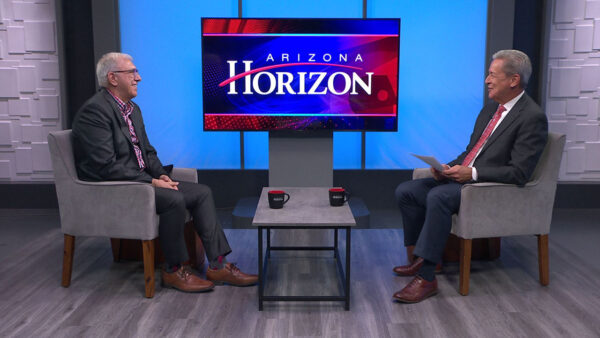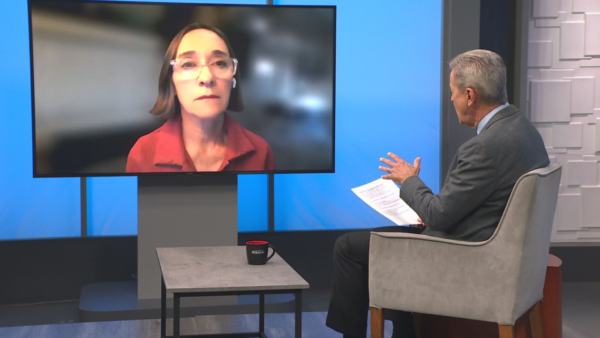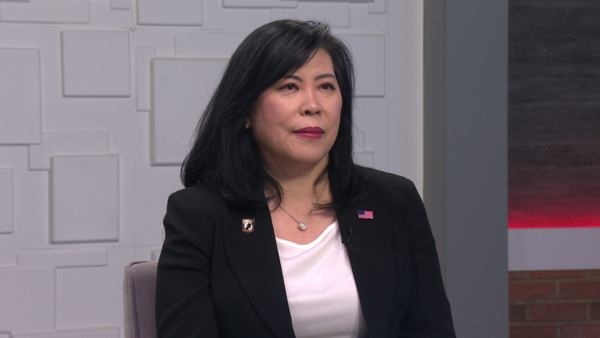A new report has been conducted on the Lower Santa Cruz River in Southern Arizona. The report by Pima County and the Sonoran Institute reveals in part the river has less odor and more fish. Ian Dowdy, a Sonoran Institute program manager, will tell us about the report.
TED SIMONS: A new report on the lower Santa Cruz River in Southern Arizona shows an improvement in water quality and an increase in the number of fish. Here with more on the report is Ian Dowdy, Program Director at the Sonoran Institute. Good to have you here.
IAN DOWDY: It's good to be here, Ted.
TED: The EPA-funded report is titled "A Living River." What are we talking about here?
IAN: Well we're talking about the lower Santa Cruz River, and the Santa Cruz River archaeologists believe it's been inhabited for the last 12 thousand years, and it's an important piece of our heritage in our region. Unfortunately, over the last 50 years or so, it's been mostly dry, except for in two stretches where there's effluent, which is treated wastewater.
And so in the lower Santa Cruz, we've been tracking that in partnership with Pima County, who operates the wastewater treatment facilities. They spent $600 million doing upgrades and we have been tracking, over the last three years, some of the metrics of the river: the Riparian health, the amount of area that is watered, and some other interesting things.
TED: For those who aren't familiar, where exactly is the Santa Cruz River?
IAN: Well the Santa Cruz River is an interesting river--it's binational and flows from southern Arizona into Mexico, and then it flows back into the Arizona around Nogales. And so it's an interesting river because it's very binational. There are two stretches that we monitor--one is the effluent dependent stretch coming out of Nogales, which is the upper Santa Cruz, and then we monitor it at the lower Santa Cruz coming out of Tucson and flowing into Marana.
TED: This is the longest stretch of effluent-dominated river water dominated water in any place?
IAN: In Arizona, for sure. It's really important because, as you probably know, before we came and settled in the Southwest there were a lot of rivers that flowed through here.
We came in and created civilizations and have been able to live and prosper quite well, but our rivers have not. And so stretches of river like this one in the lower Santa Cruz that has water in it is really really important to preserve that Riparian heritage we value.
TED: And that is a birdwatching mecca down there, isn't it?
IAN: It is. Yeah, there's a tremendous amounts of birds--a lot of migratory birds--that rely on Riparian systems. The Cottonwood and Willow gallery forest is basically endangered in our region. The effluent now provides maybe the last hope for this type of forest in our area.
TED: Let's talk about the report here looking at water quality. Sounds like significant improvements over the past three years.
IAN: Yeah, we have been monitoring it since water year 2013. That is the year the treatment plant was upgraded, the two treatment plants were upgraded. What we found is that the water is much clearer--there's much less ammonia and nitrogen in the water--so that allows the river to support more native fish and more native vegetation, and it provides a less stress environment for the ecology of the region.
TED: Why is the water improved? Was it simply a matter of time? Has something changes as far as treatment was concerned?
IAN: Yeah, they've upgraded the plant. The water is much cleaner going into the river now.
TED: I read as well that because the water is better quality, the aquifer recharge rate has improved. Explain that, please.
IAN: That's right, and it's important too. I mean, in our region we rely on any water sources that we have. And so water in this particular area and throughout other parts of Arizona--the river is the place that water is released, more out of convenience than anything else. So we rely on that water to percolate in the aquifer so we can use it later. By having increased percolation rates, we now can have that water infiltrate quicker, and the hope will be that we can make an argument that water should remain in rivers like this so that we can have it for future generations, but also enjoy the ecology and quality of life benefits the river brings.
TED: But it would stand to reason, if it is percolating and getting in the aquifer more, is the river not flowing as far as it used to?
IAN: That's right, it's not. In the lower Santa Cruz the river flowed about 23 miles or farther virtually year-round. What we found now, because the water is percolating and infiltrating quicker, is that the river is only flowing about 16 miles.
There are various sections are drying, and that's not necessarily a bad thing--that's because the water quality is better. The clogging layer at the bottom of the river goes away, and then the water can infiltrate in a more efficient way.
TED: So you have to strike a balance there.
IAN: That's right.
TED: OK, fish. Is it more fish? Is it a wider variety? Is it a little bit of both?
IAN: It's a wider variety of fish. So we found three new species that are non-native fish, but we're encouraged because we recently discovered last October that the endangered Gila topminnow has returned to the upper Santa Cruz. With the endangered Gila topminnow upstream now, there's an opportunity with this cleaner water for that fish to find habitat, perhaps in the lower Santa Cruz and for other native fish to find habitat in the region.
TED: It sounds like the odor has diminished. I guess that's always a factor when you tack about recharged water, correct?
IAN: It is; it's been a challenge for years. Anywhere around wastewater treatment plants there tends to be an odor. Obviously it's a concern to the community. In this case the odor rarely goes over the boundaries of the treatment facility.
TED: And as far as tourism is concerned you have to watch out for that. Obviously we talked about it being a bird watcher's paradise. The economic impact of the Santa Cruz river -- huge?
IAN: I don't have a number but, it is big. I mean the Sweetwater Wetlands, which is right at the outfall of the waste water treatment facility there, draws bird watchers all year-round and certainly during key migration times.
So it is important to have that type of resource nearby in a place where people can enjoy it. And odor is obviously a concern, but the key is having resources there and having water in the river so that people can appreciate it.
TED: And the upgrades and improvements that were made here, can these be used as models for other Riparian areas? Reclaimed areas?
IAN: Yeah, there are a lot of areas in Arizona that rely on reclaimed wastewater. I mean, right here in Phoenix we have the Gila river that gets water from the 91st Avenue treatment plant, and it flows some 18 miles through West Phoenix.
Well, we can look at the information that's come out of the work here in Pima County and say this might be an opportunity for other wastewater treatment facilities in our state to realize the benefits that come from doing upgrades and ensuring that rivers have a similar benefit across the state.
TED: Well, it certainly is an encouraging report. Thank you so much for sharing it. Good to see and thank you for joining us.
IAN: You are so welcome. Thank you.
----------
Ian Dowdy: Sonoran Institute program manager









